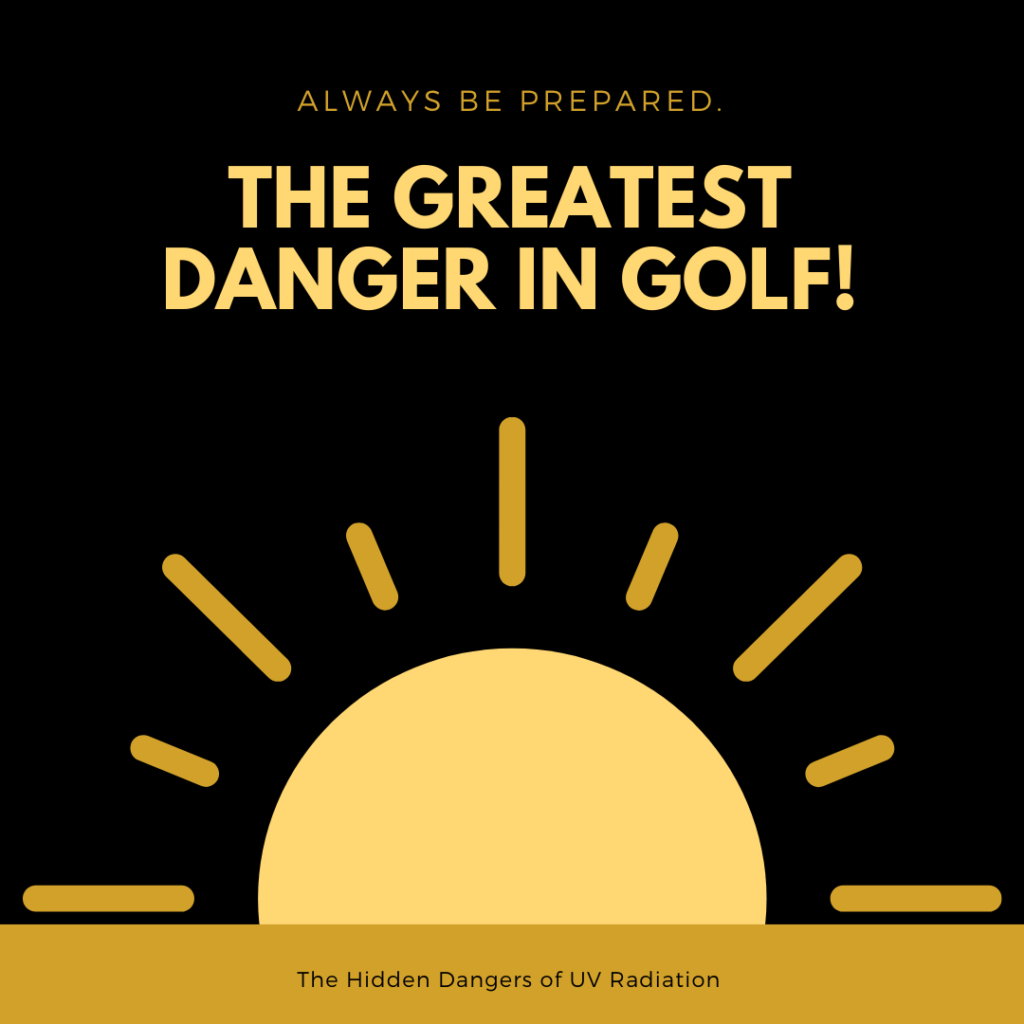Golf is widely regarded as an exceptionally safe sport. Compared to most sports, golf is safe. The game is low impact and does not include mandatory cardio. Coupled with golf’s emphasis on consistency over raw performance, it allows people to play well past the age of most other sports.
Injuries while golfing are not altogether uncommon. Players can pull muscles, tear joints, and even fall and break bones. Nonetheless, the greatest danger in golf is less obvious. One of the largest threats to golfers is damage from the sun.

While being out in the sun is beneficial to health by providing vitamin D and other psychological benefits, it can also be destructive. According to the CDC, “Most cases of skin cancer are caused by overexposure to ultraviolet (UV) rays from the sun, tanning beds, or sunlamps. UV rays can damage skin cells. In the short term, this damage can cause a sunburn. Over time, UV damage adds up, leading to changes in skin texture, premature skin aging, and sometimes skin cancer. UV rays also have been linked to eye conditions such as cataracts.”
Being outdoors is one of the best parts of golf. UV damage from the sun should not prevent you from golfing. It just means that you need to take the proper precautions.
The best precaution is to regularly apply sunscreen. The American Academy of Dermatology recommends using a sunscreen with “broad-spectrum protection (protects against UVA and UVB rays), SPF 30 or higher, and water resistance”. The SPF numbers can be confusing as well. SPF 15 blocks 93% of UV rays, SPF 30 is 97%, SPF 50 is 98%, and SPF 100 is 99%. There is a point of diminishing return for sunscreens, but obviously the higher the protection the better.
Furthermore, not all UV rays are the same. UV wavelengths are broken down into two main categories; UVA and UVB. UVA wavelengths are longer than UVB and are absorbed deeper in your Dermis skin layer. Thus, UVA radiation is responsible for skin aging and wrinkling. In comparison, UVB radiation is shorter and absorbed by your outer Epidermis skin layer. These short wavelengths result in skin burning.
Sunscreen is not the only way to limit ultraviolet (UV) exposure. The American Academy of Dermatology also recommends to, “Seek shade, dress to protect yourself from the sun, use extra caution near water, snow, and sand (as they reflect the damaging rays of the sun), get vitamin D safely (through a healthy diet), avoid tanning beds, and check your birthday suit on your birthday. If you notice anything changing, itching, or bleeding on your skin, see a board-certified dermatologist. Skin cancer is highly treatable if caught early.”
Next time you go golfing, make sure to pack sunscreen, wear a lightweight long-sleeve shirt, pants, a wide-brimmed hat, and sunglasses when possible. These precautions will not only protect you from the hazards of solar radiation, but also keep your skin looking good!

